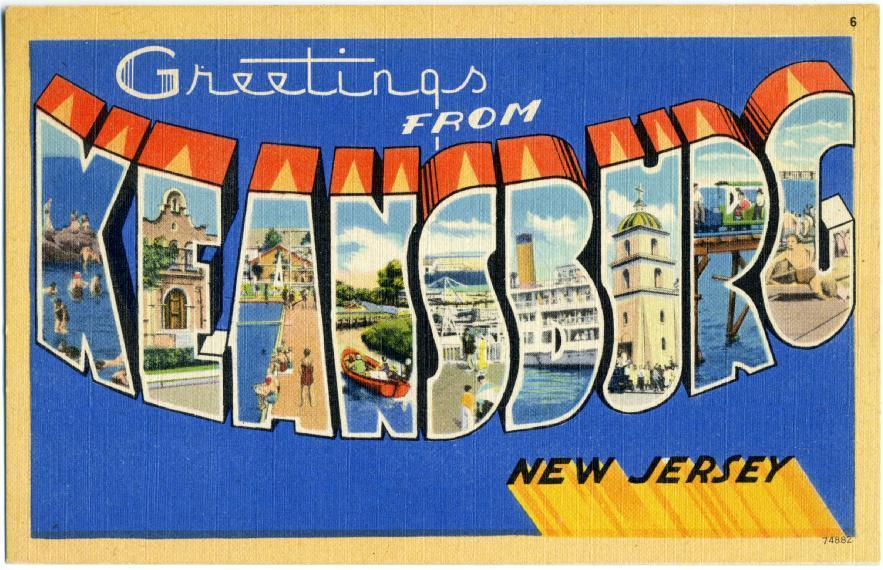Waackaack Creek : The watershed region of Keansburg
Waackaack (pronounced "Way-kay-ack") which means Land of Plenty in Leni-Lenape, is the original name of the area around Keansburg. Waackaack is also the name of the creek that runs through it. The creek starts at the Raritan Bay where it separates into two sections, Waackaack and Thorne. Both sections weave through the wetlands past Highway 36. Waackaack threads through Alloco Park in Holmdel and into Middletown, where it terminates at Dorsett Park.
The Leni-Lenape derived much of their diet from food, sourced in the creek. Although, today most folks see it as a source of recreation rather than sustenance. Boaters see the creek as a quick access to the bay and anglers take advantage of the cove areas for fish and crab. However, the creek serves as a conduit for tidal water and storm surge, directing these waters into wetlands where it can be safely absorbed.
While the Waackaack Creek and its surrounding wetlands appear to be nothing more than a swamp to many people, the entire watershed region serves a valuable function. On a basic level, it helps contain storm water and tidal surge, to prevent coastal flooding. Wetlands provide water storage and act like a natural sponge.
Further, the area serves as a habitat for diverse fish and wild life. While this may not seem as great a function as flood control consider this, it also improves the quality of the ground water. A diverse ecosystem of plants and animals filters sediment, nutrients and pollutants from the water.
Currently, there is work being done on Church Street Bridge, over the creek, which almost collapsed in 2015. The bridge was 71 years old and constructed of timber, it was last reconditioned in 1966. The county engineers declared it "structurally deficient" in 2012 with a rating of 33.6 out of 100. The wood rotted over time and it wasn't until a number of drivers noticed the pot holes were larger & deeper than usual that another inspection of the bridge was made.
The Hazlet road department immediately closed the bridge upon closer examination. The construction of a new bridge is estimated to take eight months. However, remember the Bray Avenue Bridge in East Keansburg was out for 42 months, following construction delays and financing problems with the federal government.
 |
| Original Bridge on Stone Road 1912 (Church Street / 10th Ave) |
 |
| Church Street, aka 10th Ave., aka Stone Road |
 |
| Church Street Bridge Out |
 |
| Church Street Bridge repair over Waackaack Creek |
August of 2016 saw an enormous kill off of fish in the Keansburg Harbor, Thorne and Waackaack Creeks. The fish died due to low levels of dissolved oxygen in the water which developed from high temperatures and increased organic material. Dumping leaves and organic debris into the creek increases this affect. More than 5000 pounds (2.5 tons) of peanut bunker (menhaden) died and had to be disposed of, each weighing only a few ounces. The cost of disposal was several thousands of dollars.
 |
| Thousands of Dead Peanut Bunker |
 |
| Dead Peanut Bunker (Menhaden) |
There are a number of organizations in the area that promote conservation of wetlands and the tidal creeks that comprise the watershed region. The Bayshore Regional Watershed Council is a non-profit group that promotes the responsible use and preservation of the land while protecting it from poorly planned development and pollution. NY/NJ Baykeeper are another group that strive to accomplish similar goals.
How can Keansburg promote interest in maintaining the creek and its ecological concerns? We can create events and activities that promote use and responsible management of the water shed region. Recently, the town added a retaining wall on the creek near Laurel Avenue, protecting the area from further erosion. The added sidewalk and railing is now utilized by local fisherman and crabbing.
One simple idea to promote interest is to create a launch area for small craft like canoes and kayaks. A kayak & canoe launch would promote public access to the creek. Public interest would generate tourism through paddling, fishing and bird watching. Further, ecological concerns would be monitored more closely by those users. The creeks relative isolation makes it easier for polluters. People who use parks and lands have a vested interest in maintaining them.
A proposed Waackaack Creek canoe & kayak launch: One area to be considered is the tail end of the parking lot in St John's Park (Baseball Field and Skate Park) just off Hwy 36, at the end of in St. John Place. The area already looks as if it is being prepared, perhaps due to snow plowing in the past Winter? I imagine the sand is for maintaining the baseball field. Another possible site is the Church Street Bridge area currently under construction.
 |
| St John's Park parking lot |
 |
| St. John's parking lot, aerial view |
 |
| 12 Ways To Stop Storm Drain Pollution |
For additional information see:
Keansburg Parks & Recreation
Why Waackaack Creek Is Worth Preserving
Why Wetlands Are Important
Restore The Raritan Bay
NY/NJ Baykeeper Organization
Hazlet Keansburg Bridge Unsafe Closed
Organic Matter - Low Dissolved Oxygen
Waackaack Fish Kill
Cleanup Of More Than 1 Million Fish
Why Dumping Yard Waste Into Wetlands Is Illegal
N.J. Public Access Handbook
















